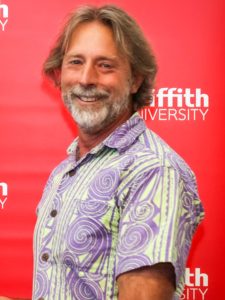Newworld-firstGriffith University-led researchhas streamlined theprocess of identifying the structure and molecular weight of compounds, which could have positive implications forscientists working in the fields of drug discovery, pollution analysis,food securityand more.
Published inRoyal Society of Chemistry’s flagship journalChemical Science,the team developed a novel Nuclear Magnetic Resonance-based(NMR)method to assign the molecular weight of compounds in mixtures which is a key asset for fieldswhere individual components incomplexmixtures need to be characterised.
The research, led byProfessor Anthony CarrollfromGriffith’sSchool of Environment and ScienceandGriffith Institute for Drug DiscoverywithPhDgraduateGuyKleksandPhD candidatesDarren Holland and Joshua Porter,isa breakthrough for scientists working on organic molecules.

Professor Anthony Carroll.
“Currentlyyou needtwo orthogonal techniques,mass spectrometryand NMR spectroscopy,towork out themolecularstructure of a compound,” Professor Carroll said.
“We’ve now condensed that into only needing one technique to work out the structure of the molecule.”
The use ofNMR,a similar method used in MRIs to image body parts,allows scientists to look at theunique“fingerprint ofacompound”.Itis theleadingmethodused toidentifythe molecular structure ofanunknown molecule.
“But if you don’t know thecompoundsmolecular weight, then usingNMR techniquesgets you a certain distance towardsidentifyingwhat the structure of a molecule is but doesn’t get you all the way.Up until now this molecular weight was determined using mass spectrometry,” Professor Carroll said.
Professor Carroll and his teamhave nowdeveloped an NMR method that can predict the molecular weight of the compound.This “all in one”method now means thatthemolecularstructurecan beconfirmed more quicklyso that the compoundcan be used for further developments.
“What we’ve developed is actually a quick diagnostic tool that can help a whole range of areas including health and the environment,” Professor Carroll said.
“Previously, it was like trying to find a needle in a haystack where one molecule out ofacomplex mixturewasresponsible for the effect that wesee in, for example,cancer cells.Thatprocessgenerally requires us to do a whole lot of separation of molecules, which means a lot of time involved indoingpurification and identification.
“Every molecule has its own molecular weight.If you don’t know what that is, then then it’s difficult toknow what that compound is.
“What we’ve developed is a technique where we canlookdirectlyat this complex mixture and identify theindividualmolecules within it.”
Professor Carrollhopedthis world-first diagnostic methodcouldbecomethe adoptedapproachinthe analysis of complex mixtures.
The research ‘Natural Products Dereplication by Diffusion Ordered NMR Spectroscopy (DOSY)’ has been published inChemical Science.

